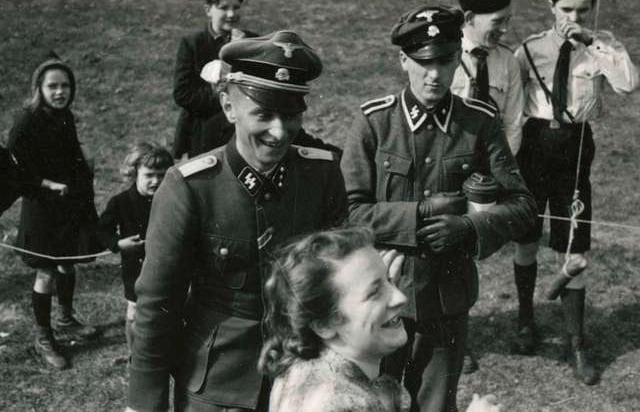SS in Nazi Germany: Origins, Role, and Legacy of the Schutzstaffel
Discover the SS (Schutzstaffel) in Nazi Germany—its purpose, atrocities like the Holocaust, key leaders like Himmler, and lasting historical impact.


The SS in Nazi Germany: History, Purpose, and Atrocities of Hitler’s Most Notorious Organization
The Schutzstaffel (SS), translated as "Protection Squadron," was one of the most powerful and feared organizations in Nazi Germany. Founded as Hitler’s personal bodyguard, it evolved into a sprawling apparatus responsible for genocide, espionage, and enforcing Nazi ideology. This article delves into the SS’s origins, structure, key figures, crimes, and lasting legacy.
Table of Contents
Origins of the SS
Structure and Hierarchy
Key Leaders: Heinrich Himmler and Beyond
The SS and the Holocaust
Role in WWII Military Campaigns
SS Branches: From Death Squads to Scientific Experiments
Downfall and Post-War Trials
Legacy of the SS
FAQs About the SS
1. Origins of the SS: From Bodyguards to Tyrants
The SS was established in 1925 as a small paramilitary unit tasked with protecting Adolf Hitler and other Nazi leaders. Initially subordinate to the SA (Stormtroopers), the SS gained prominence after the Night of the Long Knives (1934), when Hitler purged SA leadership and elevated the SS to a dominant position.
Key Milestones:
1929: Heinrich Himmler appointed Reichsführer-SS, transforming the group into a fanatical elite.
1933: SS assumed control of Germany’s concentration camps.
1939: Merged with police forces to become the Reichssicherheitshauptamt (RSHA), centralizing Nazi terror.
2. Structure and Hierarchy: A State Within a State
The SS was divided into multiple branches, each with distinct roles:
A. Allgemeine-SS (General SS)
Managed administrative duties, ideology, and racial purity programs.
Enforced the Nuremberg Laws and oversaw the Lebensborn program (breeding "Aryan" children).
B. Waffen-SS
Combat division that fought alongside the Wehrmacht (German army).
Known for brutality in battles like the Eastern Front and the Ardennes Offensive.
C. SS-Totenkopfverbände (Death’s Head Units)
Operated concentration and extermination camps (e.g., Auschwitz, Dachau).
D. Sicherheitsdienst (SD)
Intelligence agency led by Reinhard Heydrich. Orchestrated espionage and suppression of dissent.
3. Key Leaders: Heinrich Himmler and His Inner Circle
Heinrich Himmler (Reichsführer-SS)
Architect of the Final Solution.
Obsessed with occultism and Aryan supremacy.
Reinhard Heydrich
“The Hangman of Europe.” Organized the Wannsee Conference (1942) to systematize the Holocaust.
Adolf Eichmann
Mastermind behind the logistics of mass deportations to death camps.
4. The SS and the Holocaust: Engine of Genocide
The SS was the primary executor of the Holocaust:
Einsatzgruppen: Mobile killing squads that murdered over 1.5 million Jews in Eastern Europe.
Death Camps: Gas chambers and crematoria at Auschwitz-Birkenau, Treblinka, and Sobibor.
Medical Experiments: SS doctors like Josef Mengele conducted horrific tests on prisoners.
5. Role in WWII Military Campaigns
While infamous for atrocities, the Waffen-SS also fought in key battles:
Invasion of Poland (1939): SS regiments participated in mass executions.
Battle of Berlin (1945): Fanatical SS units defended Hitler’s bunker.
6. SS Branches: Science, Espionage, and Slavery
A. Ahnenerbe
Pseudoscientific wing researching Germanic heritage and occultism.
B. SS-Wirtschafts-Verwaltungshauptamt (WVHA)
Managed slave labor from camps for profit (e.g., IG Farben factories).
7. Downfall and Post-War Trials
1945: SS disbanded after Germany’s surrender.
Nuremberg Trials (1946): Declared a criminal organization. Himmler committed suicide; Eichmann fled but was captured in 1960.
8. Legacy of the SS: Symbols, Denazification, and Modern Extremism
Symbolism: The SS double lightning bolts (Sig runes) remain banned in Germany.
Denazification: Many ex-SS members escaped justice, fueling conspiracies.
Neo-Nazism: Far-right groups still idolize the SS, perpetuating its hateful ideology.
9. FAQs About the SS
Q1: What was the difference between the SS and the Gestapo?
The Gestapo was the secret police, while the SS encompassed military, political, and racial roles.
Q2: Did all SS members know about the Holocaust?
Higher-ranking officials were directly involved, but lower ranks often claimed ignorance.
Q3: Are there surviving SS members today?
Most are deceased, but war crime investigations continue (e.g., John Demjanjuk trial).
Conclusion: Remembering the SS’s Crimes
The SS epitomized the Nazi regime’s brutality, racism, and totalitarianism. By understanding its history, we honor victims and guard against future atrocities.
